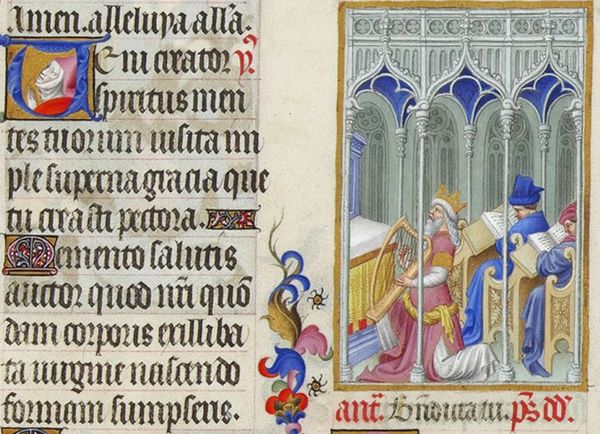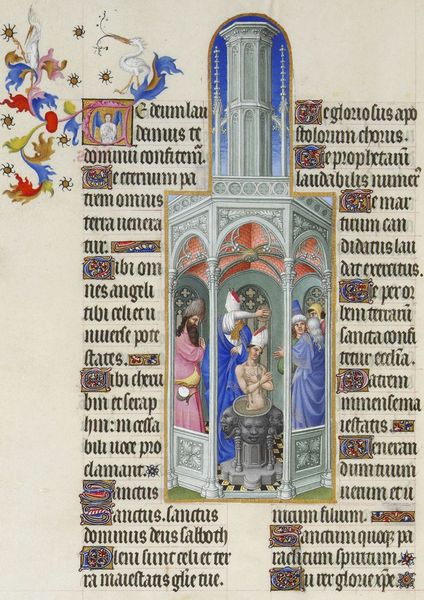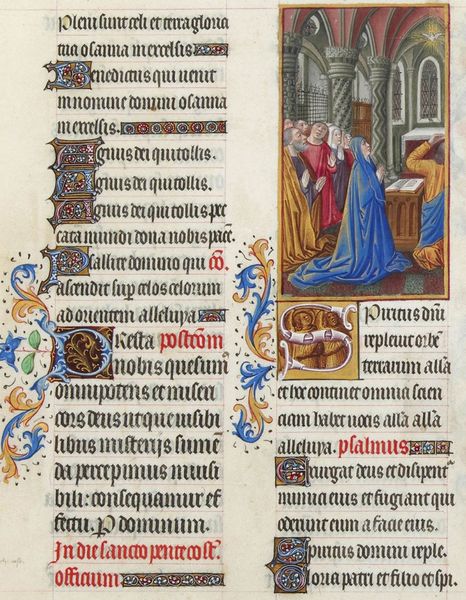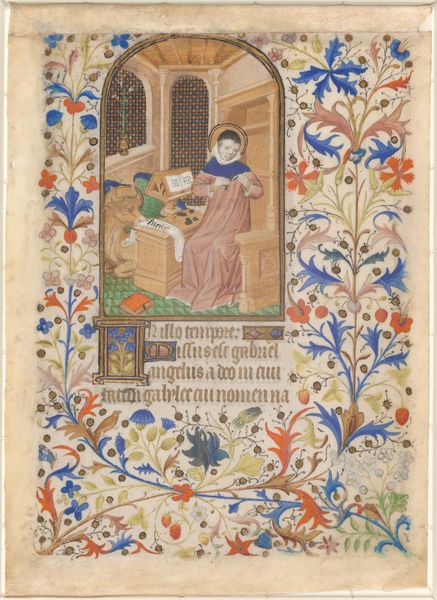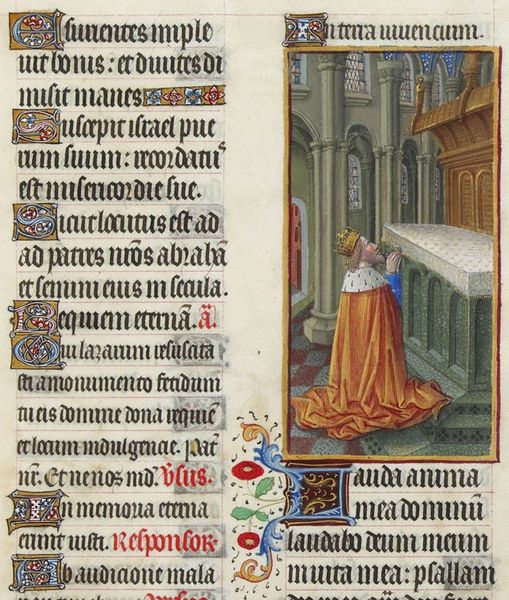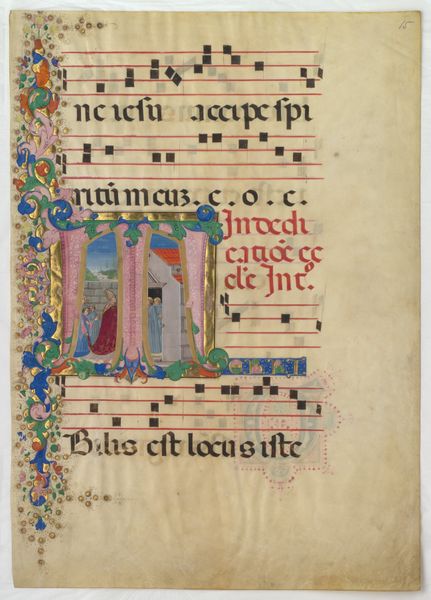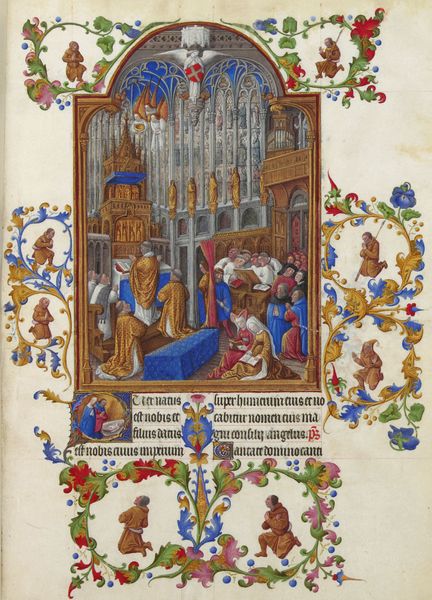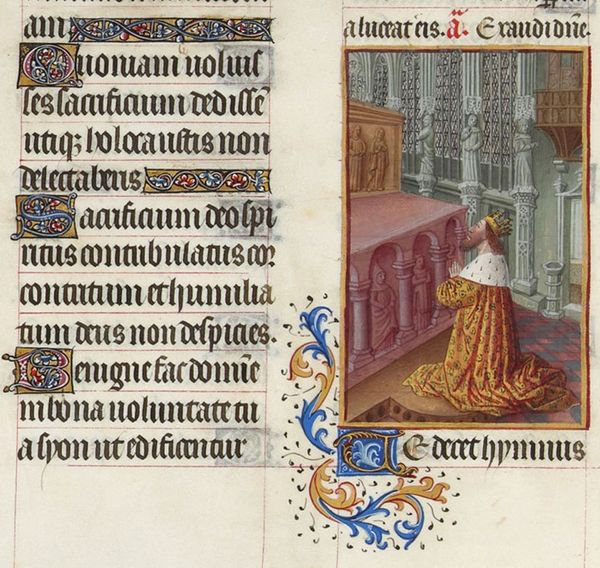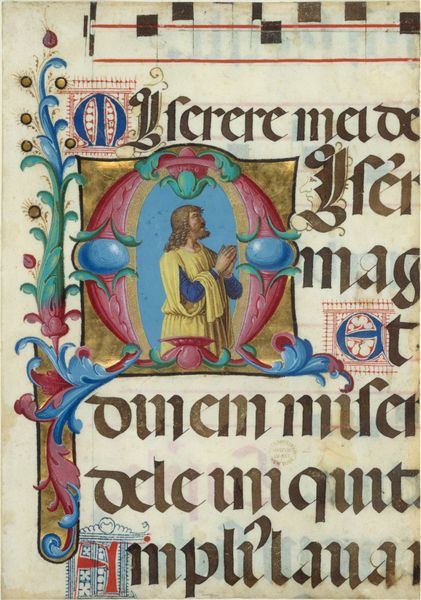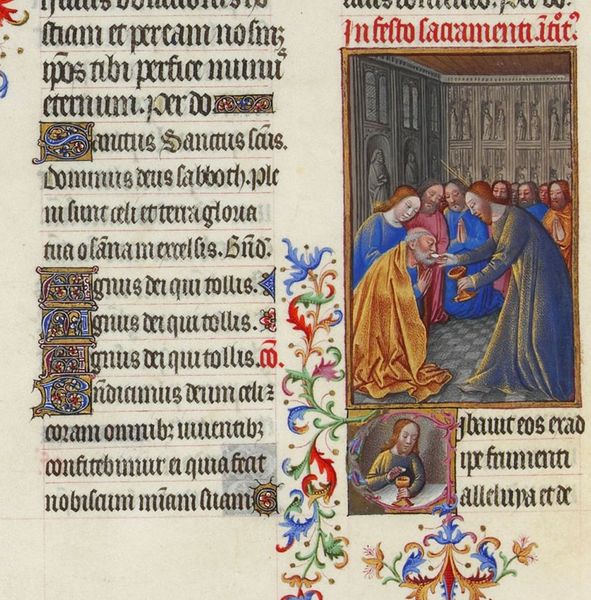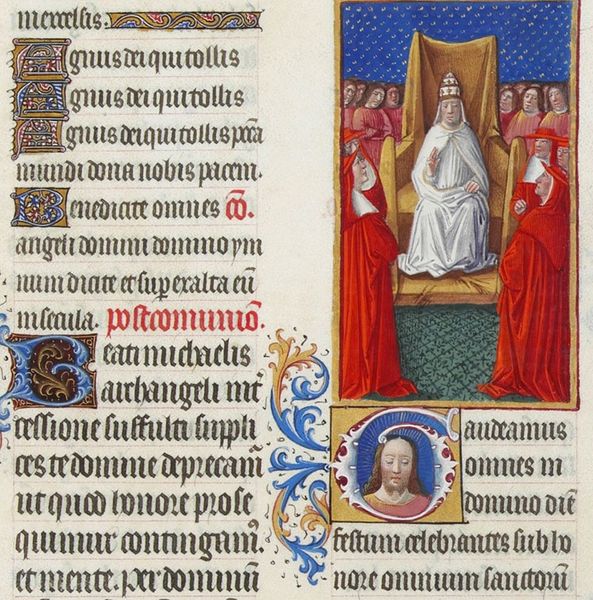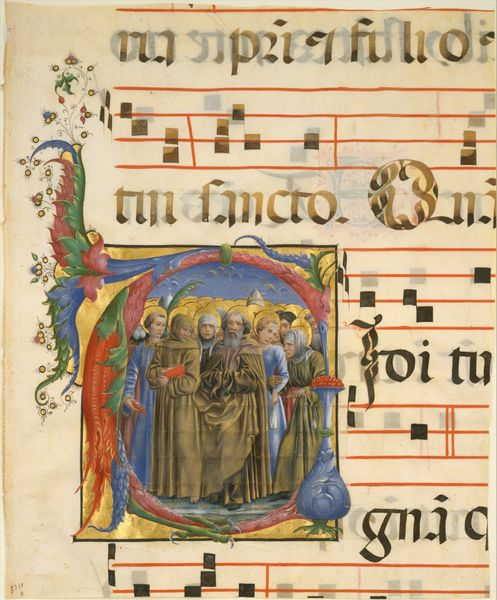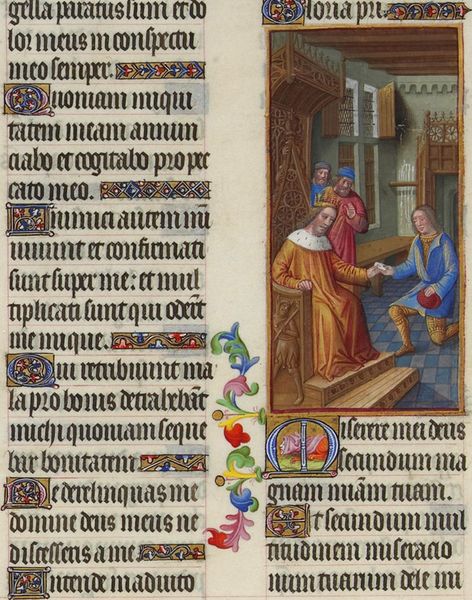
drawing
#
drawing
#
toned paper
#
water colours
#
pottery
#
handmade artwork painting
#
tile art
#
coffee painting
#
wall painting
#
watercolour bleed
#
watercolour illustration
#
watercolor
Dimensions: overall: 29.3 x 23.9 cm (11 9/16 x 9 7/16 in.)
Copyright: National Gallery of Art: CC0 1.0
Editor: This is "Death of Saint Benedict" by Fra Gregorio Mutii da Montalcino, created between 1390 and 1395 using watercolors and drawing on toned paper. The miniature's detail is incredible. What I find particularly interesting is the depiction of labor, not only in the creation of this book illustration but also in representing a specific ritual. What do you see in the materials and method, given the context? Curator: It’s fascinating how the use of watercolor, often seen as less 'serious' than oil in later periods, democratizes this image. The materiality itself implies wider consumption through illuminated manuscripts. What does the choice of toned paper, rather than pure vellum, suggest to you about material concerns and potential production costs at the time? Editor: I hadn't thought of it in terms of economy. So, perhaps the toned paper makes production cheaper. That also gives some insight into artistic patronage for devotional works. But, considering the detail, would cheaper production make the overall illustration accessible or somewhat more luxurious for individual commissioners? Curator: Exactly. And let's look at those watercolors: consider where those pigments come from. Who is involved in obtaining them? What kind of labor lies in their refinement, their mixing? The artistry involves not just application, but an entire network of material production. How does this wider implication change the way you view this “devotional" piece? Editor: It moves it from just a religious scene to one situated firmly within a web of human effort, both materially and intellectually. Thank you for highlighting this aspect! Curator: Precisely! It reveals the means of making as an integrated whole and challenges any assumed division between sacred object and crafted commodity. I am going to think about that materiality for a long time.
Comments
No comments
Be the first to comment and join the conversation on the ultimate creative platform.
